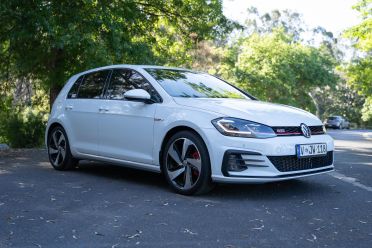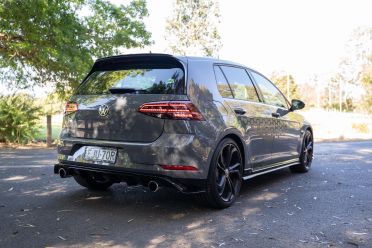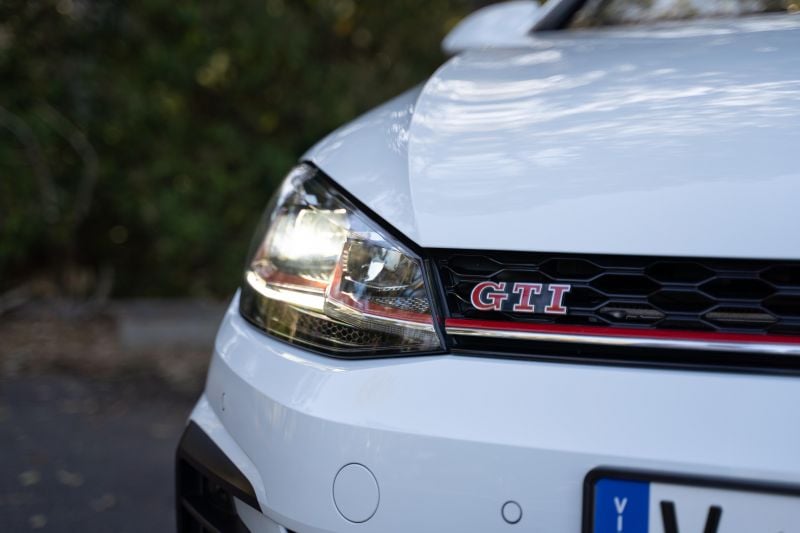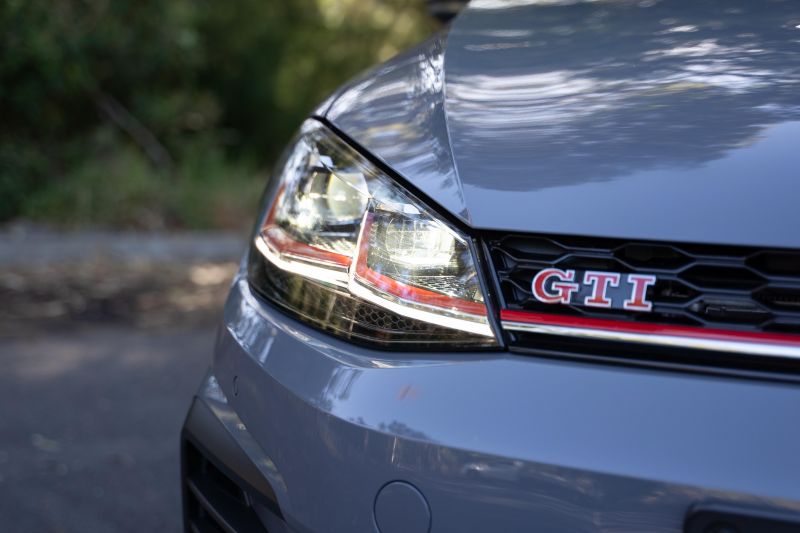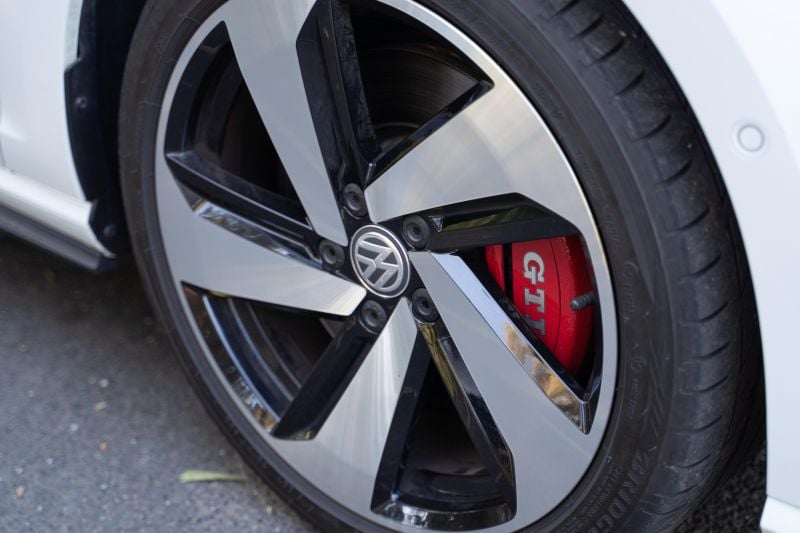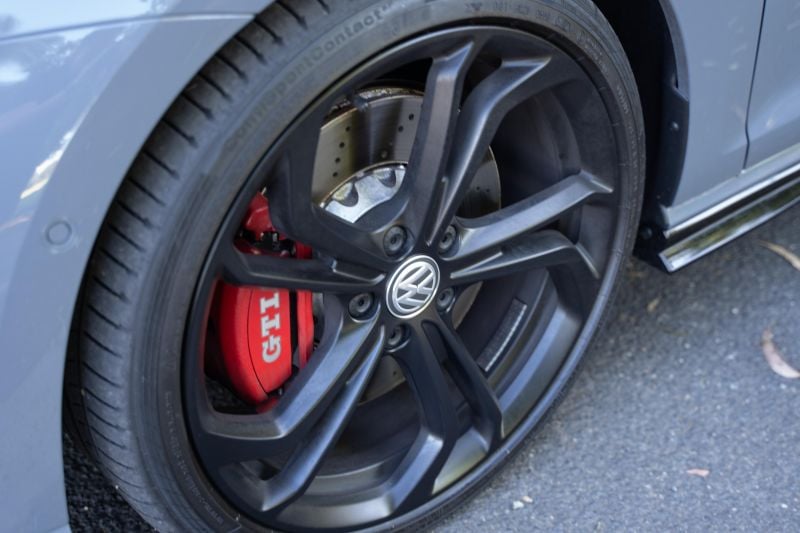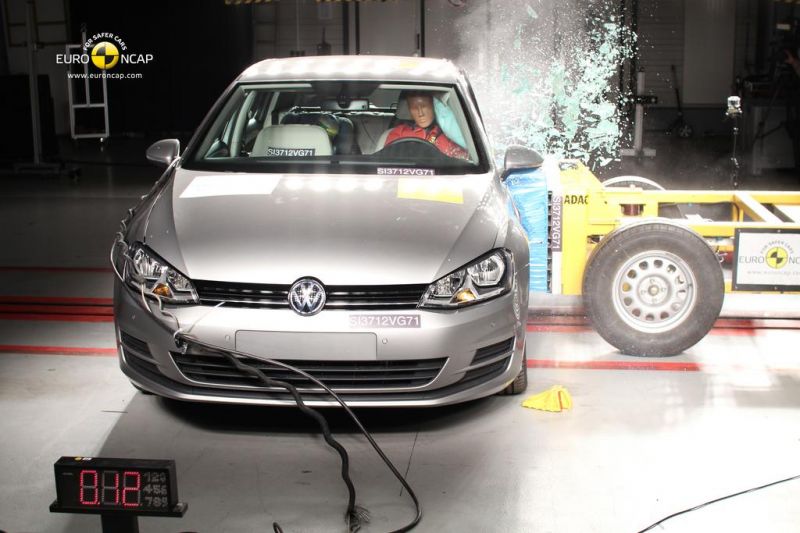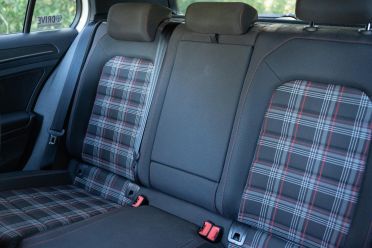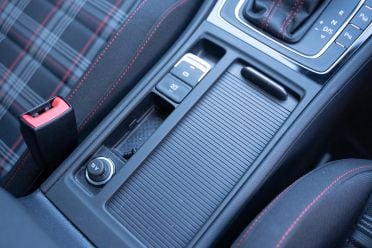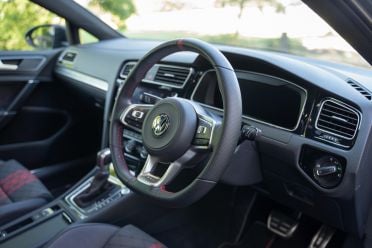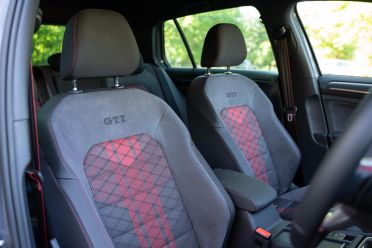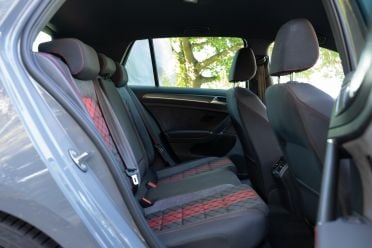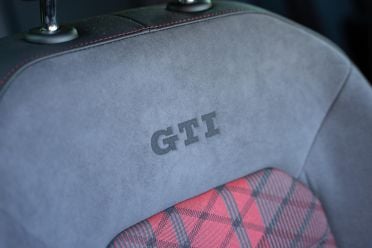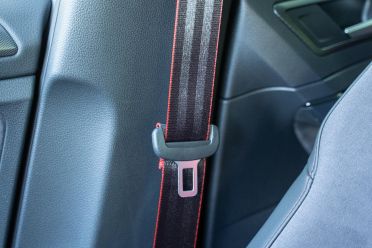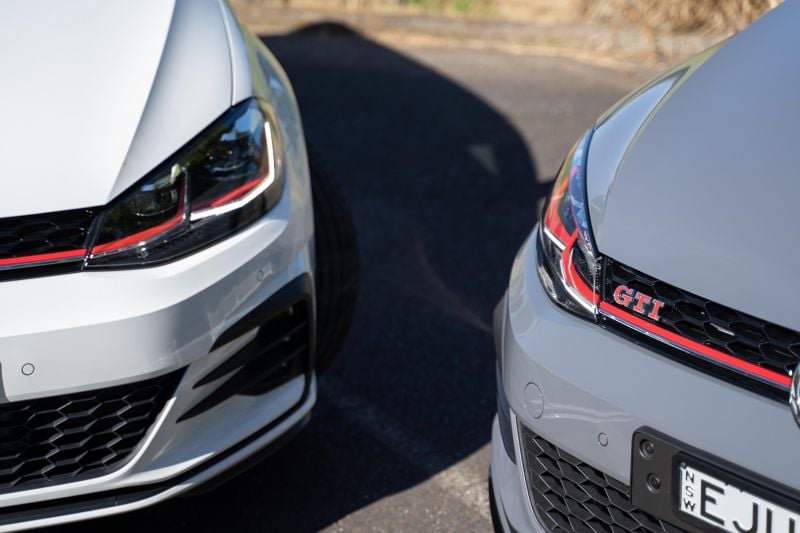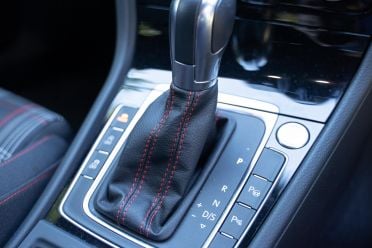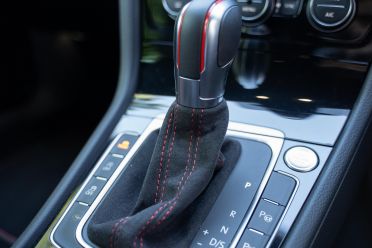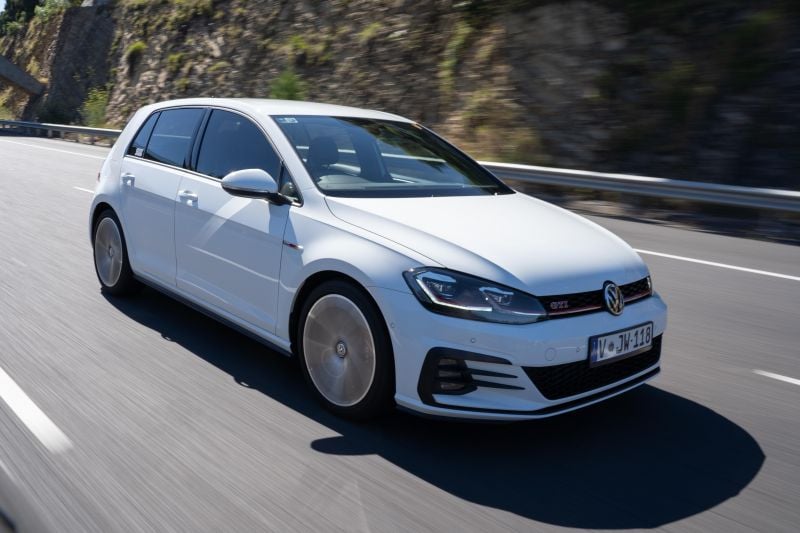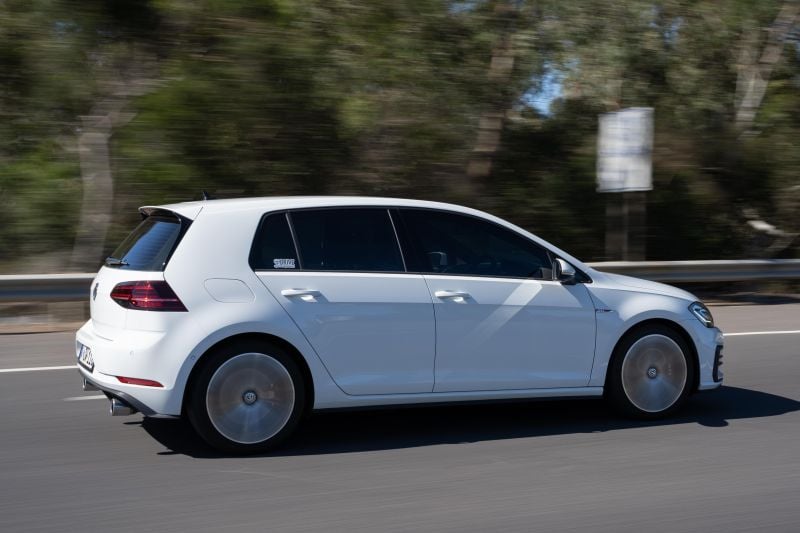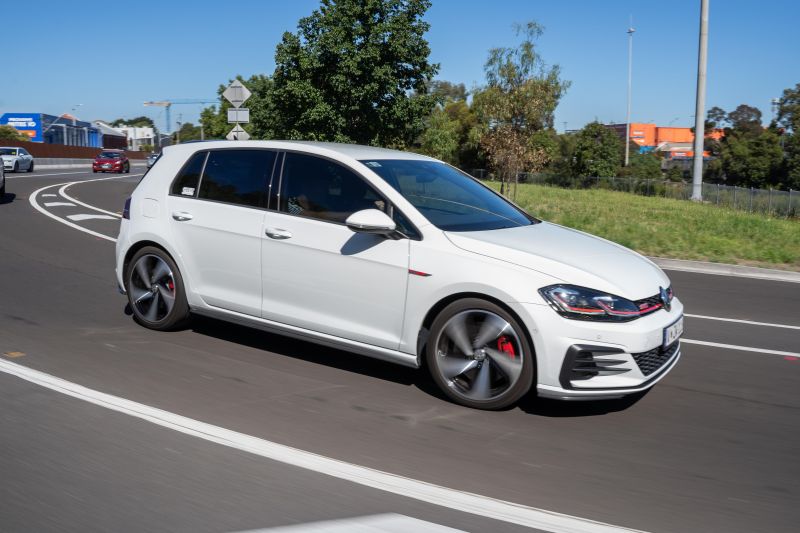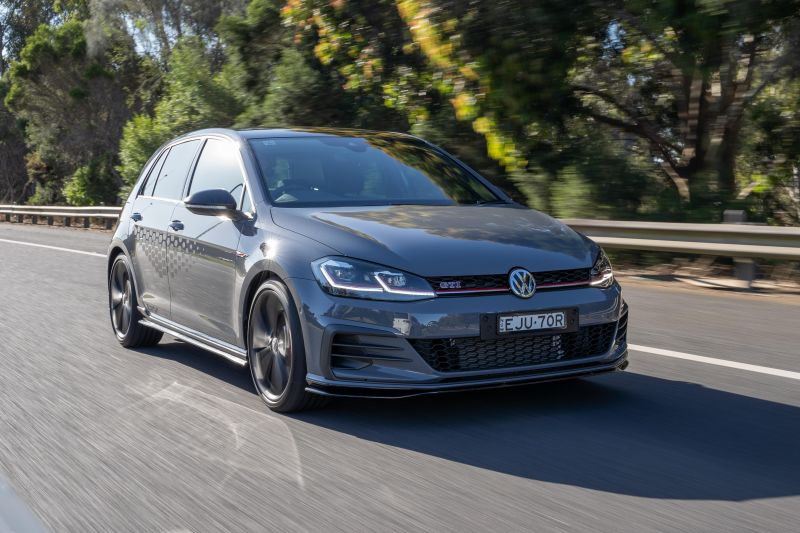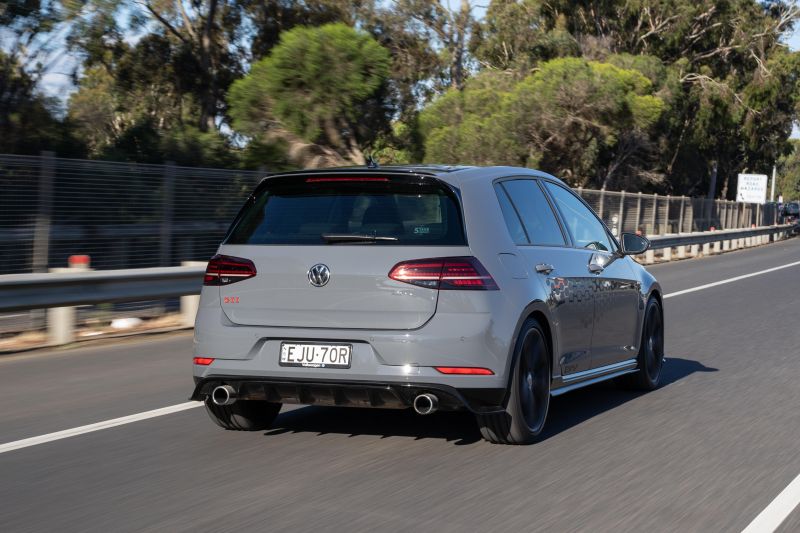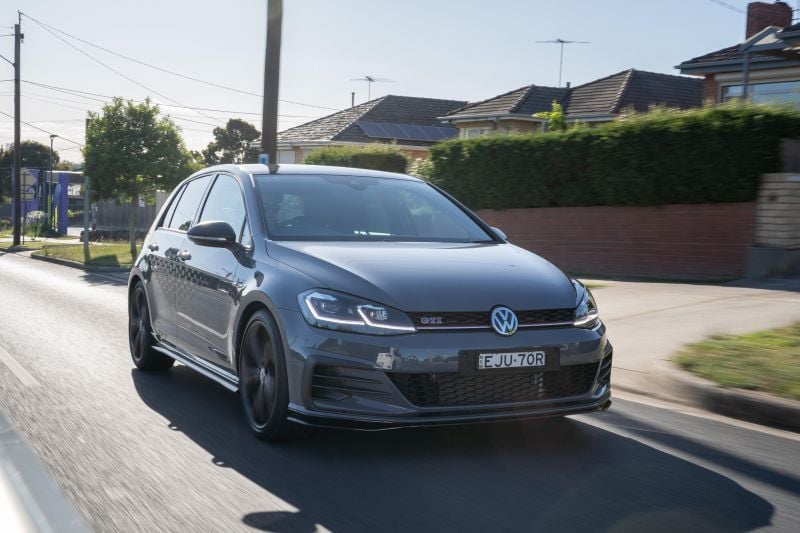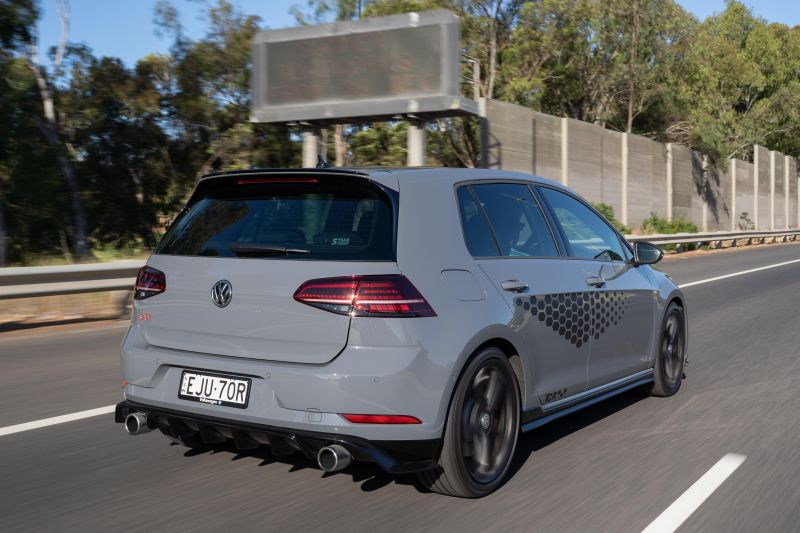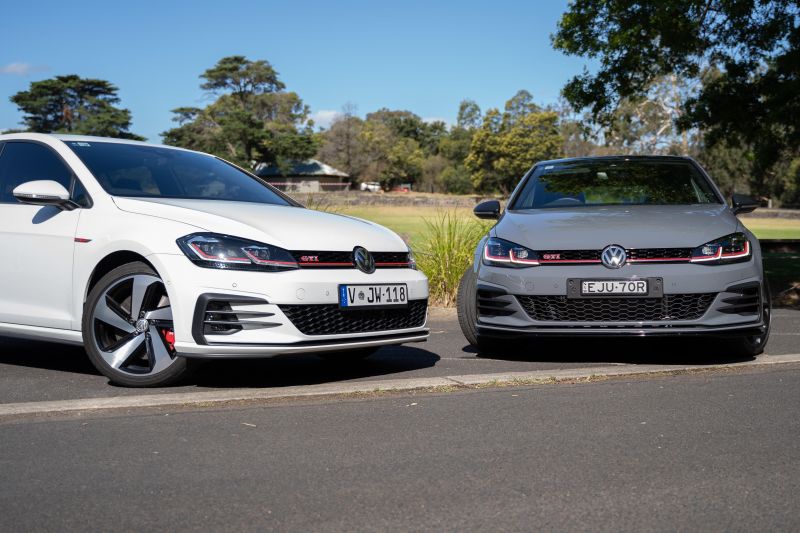As we await the launch of the Mk8 Volkswagen Golf range, some may be torn as to whether they should hold out for the new one or nab one of the last Mk7.5 examples currently in runout.
So, we decided to pitch two of the current runout performance Golfs to see which is better – and this one is close to home because one of the contenders is my personal vehicle.
In the grey corner we have the limited-edition Volkswagen Golf GTI TCR, something of a swansong for the seventh-gen GTI featuring an array of upgrades that position it essentially as a front-driven Golf R.
And, in the white corner we have ‘Freddy’ (short for Frederik), my very own Volkswagen Golf GTI (Performance). Though technically a MY19.5 build, specification for the standard Golf GTI in Australia has been unchanged since.
Brand new these vehicles are/were $4000 apart in retail pricing, so is the TCR worth the extra spend? Or is the long-standing hot hatch benchmark still king?
How much?
The ‘standard’ Volkswagen Golf GTI is $47,190 plus on-road costs in Australia, at least until the new model arrives in the coming months.
My car has no options fitted, though I do have the upgraded ‘premium’ LED tail lights familiar from the R that were fitted as an accessory. VW dealers will charge you around $1500-2000 to fit them.
As noted earlier, the $4000 step to the Golf GTI TCR bumps the price tag to $51,190 before on roads.
Our test car likewise had no options fitted, though a panoramic sunroof can be added for $1900.
MORE: Volkswagen Golf Mk7.5 price and specs
What do you get?
Being two models from the same family, specification between these vehicles is fairly similar with the TCR building slightly on the GTI’s base specification.
Over the standard GTI, the Volkswagen Golf GTI TCR adds:
- 19-inch black alloy wheels
- Black mirror covers
- TCR-specific bodykit
- Honeycomb TCR decals
- Gloss black roof
- Dynamic cornering lights
- Dynamic light assist
- Sports cloth/microfibre seats
- Alcantara gearshift lever and door trim inserts
- Rear privacy glass
- LED tail lights with dynamic indicators
Beyond the above list, standard inclusions between the two vehicles are virtually identical bar the differences in drivetrain.
So, that means common features include a 12.3-inch digital instrument cluster, an 8.0-inch touchscreen navigation system with wired Apple CarPlay and Android Auto, a flat-bottomed steering wheel (though the TCR picks up perforated leather at 3- and 9 o’clock and a red 12 o’clock marker), dual-zone climate control with rear air vents, LED headlights for low- and high-beam, LED fog lights, ambient interior lighting, aluminium paddles, steering-mounted paddle shifters, adaptive chassis control (adaptive dampers), and a black headliner.
There’s also a suite of driver assists on board (we’ll cover more in the safety section), meaning AEB with pedestrian detection, adaptive cruise control with Traffic Jam Assist, lane keep assist with adaptive lane guidance, blind-spot monitoring with rear cross-traffic alert, auto high-beam and driver attention monitoring are all standard.
Key differences are the interior upholsteries (cloth/suede v fabric), the grade of headlight (adaptive v static), the brakes, and what’s under the bonnet – more on the latter in a bit. The TCR is also offered with the exclusive Pure Grey paint as tested here, which is a no-cost option.
Are they safe?
The Volkswagen Golf wears a five-star ANCAP safety rating, based on testing conducted in 2013 by the Euro NCAP equivalent.
It received a frontal offset score of 15.92 out of 16, a side impact score of 16 out of 16, and whiplash and pedestrian protection scores of Good and Acceptable, respectively. Its total score was 35.92 out of 37.
All Golf models come standard with autonomous emergency braking with pedestrian detection, driver attention monitoring, and front, front-side and curtain airbags plus a driver’s knee airbag.
Safety features available as options or standard in higher-spec models (like the GTIs tested here) include adaptive cruise control with Traffic Jam Assist, blind-spot monitoring, lane-keeping assist and rear cross-traffic alert.
What are they like inside?
Volkswagen Golf GTI
Not much is different in the cabins of these two cars bar a few different choices of fabric and trim.
My Golf GTI features the standard ‘Clark’ tartan cloth upholstery (the only way, in my opinion) though Vienna leather with red piping is available as part of the optional Luxury Package, which bundles in electric driver’s seat adjustment and a panoramic sunroof.
The MY19 updates saw the GTI gain the standard fitment of the 12.3-inch Active Info driver’s display, which is almost on par with Audi’s Virtual Cockpit, while the 8.0-inch central touchscreen with wired smartphone mirroring and satellite navigation has been a staple in the GTI since the Mk7.5 range launched – and still doesn’t have DAB radio.
Overall it’s an upmarket and comfortable place to spend time, with supportive and well-bolstered seats, quality fabric for the upholstery and liberal use of soft-touch materials on the dash and doors.
The touch points are all lovely too – I’m obsessed with the smooth leather on the flat-bottom steering wheel – though lower down in the cabin there are harder, scratchier plastics.
It’s light and airy up front too with large windows and good headroom, and as you’d expect from a Golf the ergonomics are pretty spot on.
Storage up front is good, with a lidded double cup holder, large drawer under the centre stack, massive flock-lined door bins and a decent-sized glovebox which also houses the CD stacker and SD card slot. There’s a sunglasses holder, too.
Further back there’s good room for another two adults sat behind a taller driver and front passenger, while amenities in the second row include rear air vents, map pockets, and felt-lined bottle holders in the doors.
Unfortunately, the rear doors get hard plastic for the door tops unlike the fronts, and there’s no adjustable backrest for the back seats like you’ll get in a Tiguan.
Volkswagen Golf GTI TCR
As noted earlier, the differences you’ll find in the TCR compared to the standard GTI are down to trims and upholstery more than anything else.
The seats are trimmed in suede/fabric combination with an alternate take on the tartan print, with ‘GTI’ embroidered in the seatback.
Ahead of the driver you’ll notice the perforated leather on the 3 and 9 o’clock sections of the steering wheel, as well as the red 12 o’clock marker.
It feels great in the hand, though the silver trim with GTI lettering below the hub feels cheaper and more plasticky than the same part in the GTI.
There’s more red pinstriping on the DSG gear selector as well as on the seatbelts, which add a racier vibe, and the gearshift boot is suede.
Other than that, everything else is pretty much the same other than the carbon-look trim inserts for the dashboard and doors.
With that in mind, overall comfort, ambience and practicality is virtually identical, at least when the vehicle isn’t moving.
Both cars offer 380L of cargo volume with five seats in play, expanding to 1270L when the second row is folded. A space-saver spare is likewise shared.
What’s under the bonnet?
Both models have the same ‘EA888’ 2.0-litre turbocharged four-cylinder petrol engine under the bonnet, with the difference being the tune and transmissions.
The GTI comes as standard in ‘Performance’ specification in Australia, meaning it develops 180kW at 6200rpm and 370Nm between 1600 and 4300rpm.
Drive is sent to the front wheels via a seven-speed DSG automatic and electro-mechanical limited-slip front differential.
Volkswagen claims a 0-100km/h sprint time of 6.2 seconds, and combined fuel consumption of 6.5L/100km on the combined cycle.
For the TCR, the blown four-pot develops a healthier 213kW at 6400rpm – the same as the Golf R – though Australian models get a lower torque output of 350Nm 1700-5800rpm.
Why? Well, the TCR also gets a six-speed DSG as opposed to the seven-speed offered in Europe and the UK – where the TCR develops 380Nm – with the official line from Volkswagen being because local models aren’t fitted with the EU6 exhaust system with petrol particulate filter (PPF).
Such filtration is required to meet ever-tightening European emissions legislation, and Australia’s lax laws and sulphurous petrol mean we get a less sophisticated powertrain.
The GTI TCR does get a freer flowing exhaust system, though, which offers a more “distinctive note”.
Drive again is sent to the front axle via an electro-mechanical front diff, hooked up to beefier brakes with drilled rotors and a bespoke chassis tune that sits 5mm lower than the standard GTI.
In terms of performance and economy, the GTI TCR claims to hit triple figures in just 5.7 seconds, and use 7.5L/100km on the combined cycle.
How do they drive?
Golf GTI
Given the shared genetics, these cars are fairly similar in how they perform on the road. However, there are some noticeable differences too when you test them back-to-back.
The standard GTI has always been tuned for all-round comfort. With adaptive chassis control, this jack-of-all-trades vibe holds true since Comfort is genuinely comfortable, Sport is noticeably sportier, and there’s plenty of go under foot.
In normal driving the GTI is effortless in acceleration and isolates the cabin well from the various lumps and bumps you’ll find on Melbourne roads. Sure, it’s firmer than a normal Golf, but it’s far from uncomfortable or fidgety.
All the controls are responsive, direct and progressive. It’s all very natural and consistent in operation. You can weight up the steering and sharpen throttle response by putting it into Sport mode, or create your own bespoke drive mode using the Individual profile, tailoring engine, transmission, steering, LSD, suspension and the exhaust to your liking.
There’s a good amount of exhaust note under acceleration (partly augmented via the audio system), and the cabin offers decent insulation from road and wind noise – over coarse-chip asphalt you’ll notice the former.
If you want to dial it up a bit, the standard GTI makes for a great backroad blaster, with keen dynamics, sharp steering and plenty of grip from the standard 225/40 R18 Bridgestone Potenza S001 tyres, with the help of the front diff.
There’s feedback through the driver controls, and you get a good feel of what’s going on underneath you. Because it’s front-wheel drive, it feels a little more engaging and playful than say, a Golf R because there’s less weight and driving fast isn’t as simple as ‘point and shoot’ – it requires skill and feel.
Forget the 6.2-second 0-100 time, this thing is properly quick and rolling acceleration is muscular and linear. It’s a great everyday sports car.
It’s not the sharpest driver’s tool – you’ll want a Civic Type R or Megane RS if that’s your main priority – but no rival can match the Golf GTI’s all-round ability, not even the TCR.
Golf GTI TCR
Having become so accustomed to the feel of my Golf GTI, it didn’t take long for me to start picking up the differences – some subtle, some obvious – that come with the GTI TCR.
From the moment you push the start button the exhaust is louder and the engine note a little angrier. The driver controls are a little sharper, the steering heavier, the ride firmer.
All of that I gathered in a matter of minutes.
With a bit more time in the driver’s seat and a greater variety of roads and speed zones, and it was very apparent this isn’t just a GTI decked out with sportier looks, it feels a lot more like a focused sports hatch.
The ride in town is noticeably firmer and at times too sharp, not helped by the larger 19-inch wheels and slim-sidewall 235/35 Continental ContiSportContact tyres, but that translates to a more hunkered-down feel in conjunction with the lowered suspension, and reduced body roll in the bends.
Punt the GTI TCR up a twisty B-road and you’ll immediately notice it seems angrier, more alert, and quicker on its feet than the standard car. You have more confidence to carry more speed in and out of corners, and it just seems to get its power down a little better with its greater footprint.
Flick it into Sport mode and the exhaust will let out pops and crackles on upshifts and overrun too, which is a nice touch. Considering my GTI is a little on the quieter side, at least when you’re sitting in it, hearing the bangs out the back was quite addictive.
And, it just fricken flies. Forget the 20Nm torque deficit, the six-speed DSG and extra 33kW over the GTI Performance-spec make this thing feel so much quicker, both off the line and in gear.
Volkswagen claims 0-100km/h is dispatched in 5.7 seconds, and it feels every bit as quick, if not moreso on the move. I’ve seen videos online of the EU-spec TCR outgunning the Golf R from 100-200km/h, and given it’s got the same power but carrying less weight, it’s not hard to believe.
It doesn’t seem to axle tramp as much as the old GTI 40 Years did either, so whatever VW has down to help the TCR get its grunt to the ground better, keep doing it.
With that all said, you only really reap the benefits of the GTI TCR when you’re driving it hard, which is likely going to be a small portion of your time in the car if you’re using this as a daily.
I hit the bump stops numerous times going 40km/h over bridge joins and road imperfections in Melbourne’s CBD, which not only sent a thud through the cabin, but you also feel it through your being. Not nice.
The added road noise on freeways is another drawback compared to the standard GTI, as is the lack of a seventh cog so the 2.0-litre engine is spinning at a revvier 2250rpm at 100km/h. It’s not too loud but there’s definitely a slight drone.
It’s also less efficient, naturally. I tend to get between 8.0-9.0L/100km in real-world driving skewed to urban commuting in my Golf GTI (or down to around 6.0l/100km on the freeway), and in the TCR you’ll easily see high nines into 10s and 11s.
Given our lax emissions laws and relatively cheap fuel, that likely won’t matter as much to most people looking at these cars. But, if you’re driving this every day, it’s worth noting you’ll be at the pump more often.
Cost of ownership
Both vehicles are covered by Volkswagen Australia’s five-year, unlimited kilometre warranty.
While the company’s local website quotes a flat $2300 for a five-year Care Plan on GTI and R models, individual service pricing differs should you pay-as-you-go.
The first five visits for the GTI cost $413, $562, $737, $951 and $413 respectively. Meanwhile, the same intervals for the GTI TCR cost $379, $589, $643, $1237 and $445. Over that five-year period, that’s a difference of $216 if you pay per service ($3076 v $3292). Either way, that five-year Care Plan looks pretty good.
Beyond service prices, Volkswagen will give you a 12-month subscription to its 24-hour roadside assistance service each time you service your vehicle with a participating Volkswagen dealer for up to nine years.
CarExpert’s Pick
Going into this comparison I wasn’t sure how it’d turn out. Sure, I really really love my car, but the GTI TCR makes a compelling case for itself.
The extra grunt and equipment go a long way to make the TCR feel like a more complete vehicle in terms of specification, and it certainly catches more eyes (especially in the Pure Grey we have on test) compared to the normal model, if that’s important for you.
It’s also a more engaging driver’s car, makes a better sound, and goes like stink.
With that said, the ‘standard’ GTI is a better daily driver, offering more comfort, more refinement, better fuel efficiency, and stays truer to the GTI concept.
For me, I came away reminded as to why I chose my car in the first place – it’s arguably the best all-round hot hatch, if not sports car, there is.
The GTI TCR is a great car, no denying that. But the things that make it better than the standard GTI conversely make it worse in other areas.
Will the tables turn with the Mk8? We shall see!
Click the images for the full gallery by Wesley Loh (@garagetribe on Instagram)






